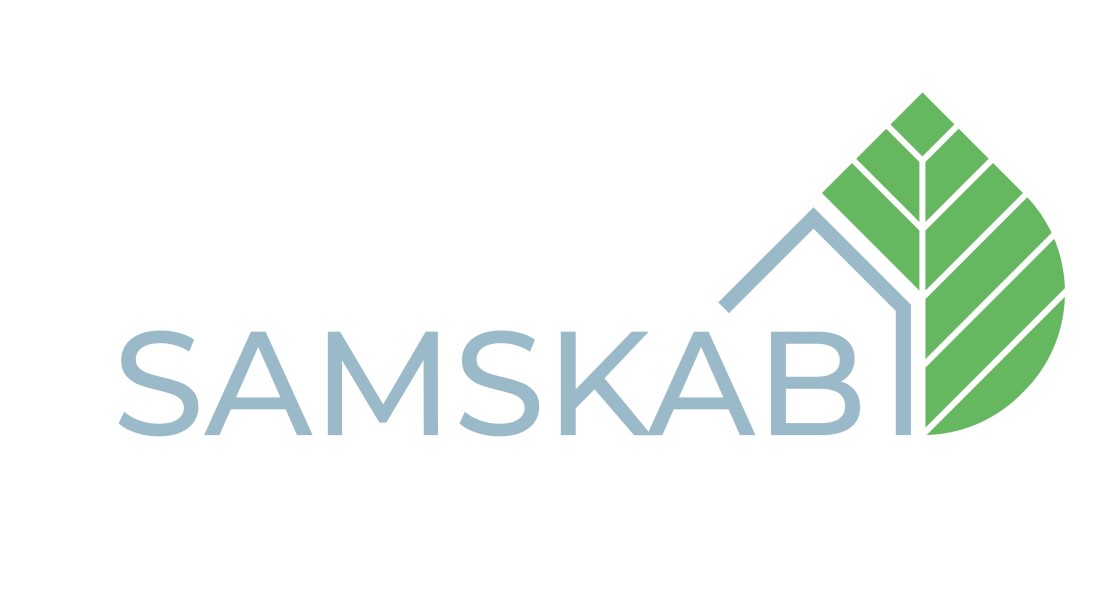From Gray Housing Associations to Green Neighboring Communities (SAMSKAB)
The project contributes knowledge and tools that can support the establishment of completely new green neighborhood communities as well as the transition from gray housing associations to green neighborhood communities and thereby strengthen the green transition.

Based on case studies from three residential areas in Denmark, SAMSKAB challenges the notion that the green transition takes place primarily through individual behaviour and technological change by pointing out that it can take place just as much as a fundamental social change involving neighboring communities.
The project aims to strengthen the green transition by contributing with knowledge and tools that can support the establishment of new green neighborhood communities (groups of people living in the same local area, sharing the desire to live more sustainably and acting together on this desire), or the transformation of “gray" housing associations (that do not have and environmental ambition) into green neighborhood communities.
Read more about the project on SAMSKABS own website.
The SAMSKAB project has five coherent purposes, which are to:
- Gain knowledge about how green neighboring communities are established, either from the start or through a transformation of existing gray housing associations.
- Apply this knowledge to strengthen and scale up the spread of green neighborhood communities and thus contribute to the citizen-driven green transition.
- Document environmental and social impact in relation to green neighboring communities.
- Contribute scientific knowledge on how environmental behavior and practice can be strengthened, influenced and scaled up through community and collective action.
- Follow the distribution of min. 100 green neighboring communities in Denmark.
The starting point for SAMSKAB is that a significant green transition does not just require political regulation and technological solutions, but also civil action and behavioral changes.
The hypothesis in SAMSKAB is based on cooperation and collective action for common goals in green neighborhood communities reinforces environmental behavior and promotes both an environmental and a social agenda.
The project is a collaboration between four core partners; University of Copenhagen, Behave Green, Bofællesskab, Omstilling Nu. In addition, the project involves municipalities, housing organizations and other actors who have an interest in promoting green transformation in the housing sector.
The project's three external partners play a crucial role in the upscaling of new green neighborhood communities in different residential areas and housing types. The companies Behave Green and Bofællesskab as well as the association Omstilling Nu must help to ensure the organizational and local anchoring in close partnership with the researchers. The three organizations work in different ways with green conversion and resident communities.
Case studies
The project investigates how green communities can be developed in the following three very different residential areas in Denmark:
- The Copenhagen district of Tingbjerg, which is characterized by non-profit housing and many resource-poor citizens.
- The village Hvalsø, which has many new housing associations and resourceful citizens.
- Vinge by Frederikssund, which is Denmark's largest urban development project.
The case studies will provide answers to how residents and housing associations can spread the green communities in both existing 'gray housing areas' and new buildings, but also across ownership forms and different housing and housing forms.
The ambition is that the project up to 2025 can help support the establishment of 100 new neighboring communities and at the same time document the social and environmental effect.
SAMSKAB is structured into 3 phases (A, B, C) and 5 work packages.
Phases
- A: Tool development and design
- Work Package 1: Motivation and Viability
- Work Package 2: Organizational Barriers
- Work Package 5: Dissemination and Communication
- B: Tool testing and adjustment
- Work Package 1: Motivation and Viability
- Work Package 2: Organizational Barriers
- Work Package 3: Environmental and Social Impact
- Work Package 5: Dissemination and Communication
- C: Upscaling of tools
- Work Package 4: Upscaling
- Work Package 5: Dissemination and Communication
Read more about each of the phases and work packages on SAMSKABS own website.
2022
Master thesis: Vejen til grønne nabofællesskaber i parcelhuskvarterer. Klimahandling i fællesskab (in danish).
Ida Adamsen, Ida Amalie Nordborg Nielsen, Signe Filtenborg
2021
Action Catalog: Climate Action in Collaboration (in danish).
Concito DeltagerDanmark
Researchers
| Name | Title | Phone | |
|---|---|---|---|
| Search in Name | Search in Title | Search in Phone | |
| Freja Bach Kristensen | PhD Fellow | ||
| Jens Villiam Hoff | Professor Emeritus | +4535323386 | |
| Quentin Gausset | Associate Professor | +4535323473 | |
| Simon Westergaard Lex | Associate Professor | +4535323458 |
Funded by
SAMSKAB: From gray housing associations to green neighboring communities has received a grant of 6,413,993 DKK from the VELUX FOUNDATION'S HUMpraxis program.
Project: SAMSKAB: From gray housing associations to green neighboring communities
Period: 2022-2025
Contact
Quentin Gausset (Project Manager)
Associate Professor
Department of Anthropology
quentin.gausset@anthro.ku.dk
+45 35 32 34 73
Simon Westergaard Lex
Associate Professor
Department of Anthropology
simon.lex@anthro.ku.dk
+45 35 32 34 58
